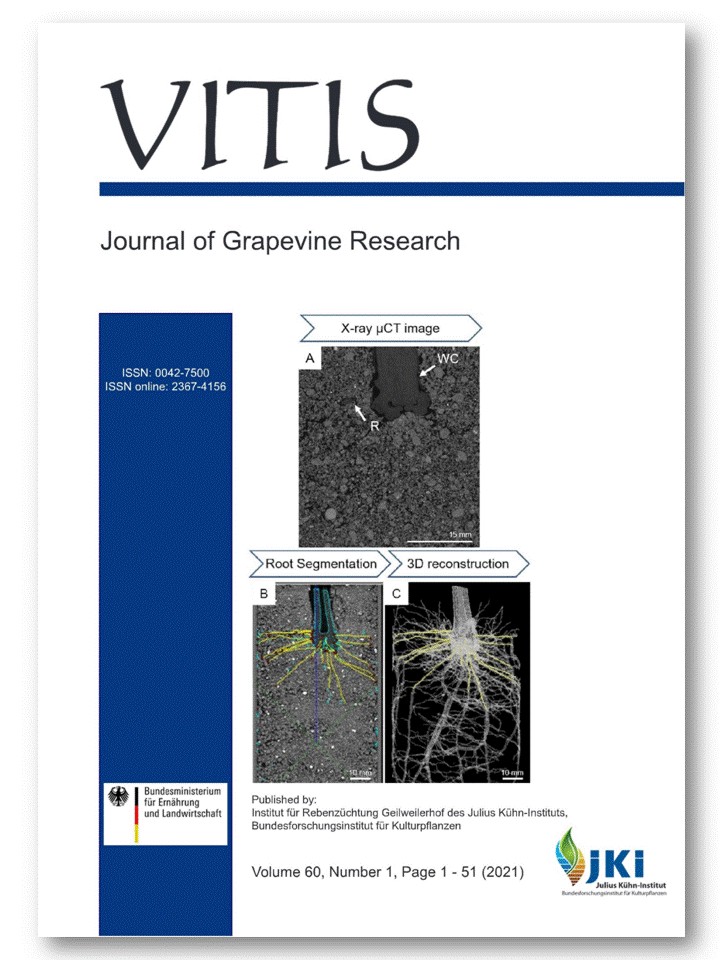High-resolution 3D phenotyping of the grapevine root system using X-ray Computed Tomography
DOI:
https://doi.org/10.5073/vitis.2021.60.21-27Keywords:
3D root architecture; 3D root model; non-invasive; X-ray µCT; root angle; root growth; Vitis vinifera L.; adventitious root.Abstract
Plant roots are essential for water and nutrient uptake and contribute to the plants' response to environmental stress factors. As the hidden half of a plant, investigation of root systems is highly challenging, most of available methods are destructive and very labour-intensive. In this proof-of-concept study, a non-invasive X-ray micro computed tomography (X-ray µCT) method was applied to investigate the phenotypic variation of the complex three-dimensional (3D) architecture of grapevine roots as a function of genotype and soil. Woody cuttings of 'Calardis Musqué', 'Villard Blanc' and V3125 ('Schiava Grossa' x 'Riesling') were cultivated in polypropylene columns filled with two different soil types, clay loam and sandy loam, for 6 weeks. Afterwards, the columns were scanned once using the technique of X-ray µCT. The received raw data were analysed for the reconstruction of 3D root system models (3D model), which display a non-destructive visualization of whole, intact root systems with a spatial resolution of 42 µm. The 3D models of all investigated plants (in total 18) were applied to quantify root system characteristics precisely by measuring adventitious root length, lateral root length, total root length, root system surface area, root system volume and root growth angles from the woody cutting relative to a horizontal axis. The results showed that: (i) early root formation and root growth differed between genotypes, especially between 'Calardis Musqué' and 'Villard Blanc'; and (ii) the soil type does influence adventitious root formation of V3125, but had minor effects on 'Calardis Musqué' and 'Villard Blanc'. In conclusion, this innovative, high-resolution method of X-ray µCT is suitable for high resolution phenotyping of root formation, architecture, and rooting characteristics of grapevine woody cuttings in a non-destructive manner, e.g. to investigate root response to drought stress and would provide new insights into phylloxera root infection.
Downloads
Published
Issue
Section
License
Copyright (c) 2021 The Author(s)

This work is licensed under a Creative Commons Attribution 4.0 International License.
The content of VITIS is published under a Creative Commons Attribution 4.0 license. Any user is free to share and adapt (remix, transform, build upon) the content as long as the original publication is attributed (authors, title, year, journal, issue, pages) and any changes to the original are clearly labeled. We do not prohibit or charge a fee for reuse of published content. The use of general descriptive names, trade names, trademarks, and so forth in any publication herein, even if not specifically indicated, does not imply that these names are not protected by the relevant laws and regulations. The submitting author agrees to these terms on behalf of all co-authors when submitting a manuscript. Please be aware that this license cannot be revoked. All authors retain the copyright on their work and are able to enter into separate, additional contractual arrangements.



